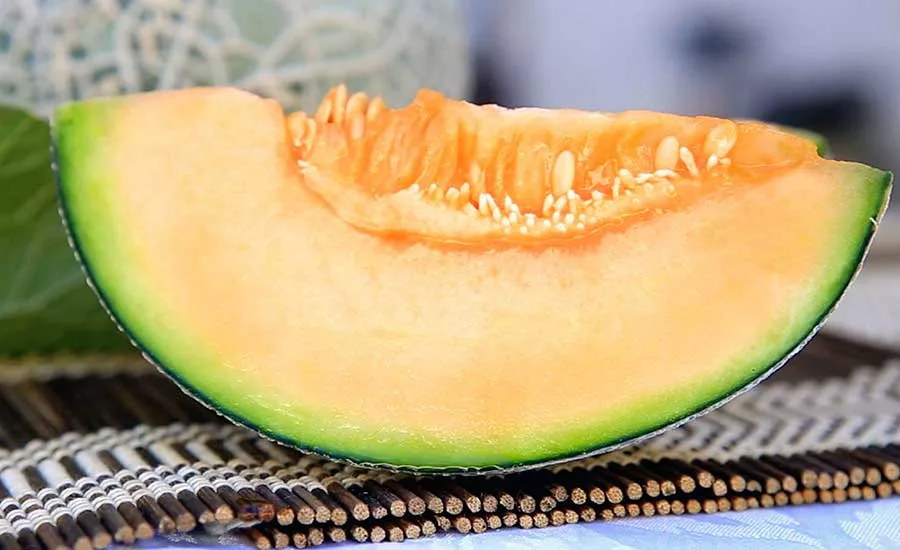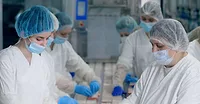What Was Not Learned from the FDA Investigation of Salmonella on Cantaloupe in 2022?
With another cantaloupe outbreak occurring in 2023, change needs to happen, or there will likely be another outbreak in 2024

Video credit: FreedomMAN/Creatas Video via Getty Images
Before you as a reader tune out, let me hasten to point out that cantaloupe is only one example. Sadly, most of the following discussion could apply to any number of outbreaks for many different commodities and products. There is a steady stream of outbreaks and recalls. All stakeholders in the food industry should consider what can be learned, and look for ways to improve when new information becomes available.
With this preamble, we can return to the situation with cantaloupe. This discussion will examine several areas related to the U.S. Food and Drug Administration's (FDA's) April 2023 investigation report1 and FDA's associated outbreak investigation:
- "Business as usual" will continue to produce the same results
- Whole genome sequencing (WGS) is a useful tool, but it is not an answer to everything
- Everyone needs to follow known best practices
- Innovation and understanding are needed to realize measurable improvements.
Business as Usual Will Continue to Produce the Same Results
At the International Association for Food Protection (IAFP) meeting in Toronto, Canada in July 2023, it was reported that the 2022 regional outbreak of Salmonella Typhimurium on cantaloupe, which caused 87 reported illnesses and 32 hospitalizations between July and September of that year,1 is not a unique event. In fact, similar outbreaks have been happening for more than a decade—notably, just a few years earlier in 2020. FDA's April 2023 report on the 2022 outbreak found genetic relatedness between the 2020 outbreak isolates and those collected in 2022 from the same states, which offers evidence that common contamination sources and Salmonella strains could be persistent within the Southwest Indiana growing environment.
Another, smaller outbreak of Salmonella Newport in cantaloupe and watermelon—involving three of the same farms that were implicated in the 2022 Salmonella Typhimurium outbreak on cantaloupe—occurred in the Midwest in 2023. FDA closed its investigation into this outbreak in October. These findings indicate the continued presence of food safety concerns linked to melons from the Southwest Indiana growing region.
It is important to note that despite considerable effort in 2022 and the expectation that an outbreak was likely to occur, no "smoking gun" was reported. Over the years, various farms and packinghouses have been implicated, but a specific nexus was not shown. Unfortunately, this was not surprising. It is generally unreasonable to expect that the conditions leading to illness will still exist after the illness or outbreak has been detected. If such conditions were ongoing, then many more people could be expected to become ill, and the duration of the outbreak would be longer. In 2022, the fields were tilled, and the identified distribution channels were transitory. The conditions that specifically led to the illnesses were no longer present. The complexity of the food chain will limit the perfect assignment of cause or, more negatively, will limit the ability to assign blame. Blame assignment can stymie efforts to reduce risk.
This year, something appears to have changed. There may have been a breakthrough relative to this regional cycle of frustration for cantaloupe. Other sources report FDA as having collected samples from a farm of interest and surrounding areas that tested positive for Salmonella and matched strains that caused previous outbreaks, including those discussed in the 2022 outbreak investigation report.1 Potentially, the report for the 2023 outbreak will be more specific, but the questions remain: will it identify the origins of the pathogens, and will it be a roadmap to preventing this recurring cycle of illness? Only time will tell.
Even if it is not the purpose of investigations, the assignment of blame is a key result. Investigation reports are a roadmap for plaintiff attorneys seeking to assist the injured. The apparent assignment of blame prevents transparency. The investigation system will continue to be frustrated, except when branded finished goods are found to contain the pathogen. I would suggest that investigations need to become more transparent and be viewed as a means to drive improvement. This cannot happen if the "blame game" dominates the process.
This learning approach has been used by the aviation industry and the Federal Aviation Administration to successfully make air travel a marvel of safety. Importantly, the aviation industry is heavily invested in prevention and carefully studies near misses. When something goes wrong, an improvement or change is needed. The need to change the pathogen investigation process does not rest entirely on the investigators. Industry and researchers must be active participants in this improvement process, as well.
Looking for quick answers on food safety topics?
Try Ask FSM, our new smart AI search tool.
Ask FSM →
WGS is a Useful Tool, But Not an Answer to Everything
The investigation in 2022 did not result in the identification of a specific microbial source or route that resulted in the contamination of cantaloupe associated with this outbreak, despite the extensive use of WGS. However, the agency identified Salmonella spp. in on-farm, postharvest, and off-farm environments.
The 2022 report does identify some items based on sequencing data that could have resulted in the outbreak:
- Finding related strains at multiple locations in the region including farms and a postharvest packinghouse. The genetic relatedness between the 2020 outbreak isolates and those collected in 2022 provide evidence of common contamination sources and support the idea that Salmonella strains could be persistent within this growing environment.
- All farmland associated with this outbreak was not under consistent management or control by cantaloupe growers. The report suggests that cantaloupe farms do not routinely monitor for potential food safety hazards during non-cantaloupe growing season. The report specifically calls out the potential applications of untreated turkey manure to land used to produce cantaloupe. Without seeing the data, I question whether anyone is foolish enough to apply raw manure to any farmland. This call-out might be a stretch.
- Multiple Salmonella strains associated with human illness were recovered and may indicate persistent reservoirs in the area.
- The report implies that cleaning and sanitation practices may have been poorly executed despite written Standard Operating Procedures (SOPs). The report also stresses the need for verification procedures.
- The recovery of diverse strains of Salmonella within the immediate growing and non-growing environments suggests that the region may contain multiple reservoirs for Salmonella spp.
The final report for the 2023 outbreak is not yet published. However, with regard to the origins of the pathogens, I do not expect an answer. I expect it to include another list of possible explanations similar to the 2022 report. The pending report for 2023 may implicate several farms or facilities based on discovery of the illness-causing strain. Ultimately, one must question whether this will improve food safety or reduce illness.
Everyone Needs to Follow Known Best Practices
The Salmonella problem on cantaloupe is probably related to surface contamination. There is some research pointing to internalization through the blossom during fruit development, but this requires very high concentration to occur with significant frequency. However, no definitive proof has been made as to how cantaloupe is a vector for illness due to Salmonella. For this discussion, we will assume that the problem relates to surface contamination. With this premise, we can pose the question: what can be done to prevent illness?
FDA's report on the 2022 outbreak1 includes many recommendations, but these recommendations read like common sense to anyone working in food safety. They are not specific enough to inspire more than a call to "do better." Evidently, what seems to be common sense practice is not being followed, or at least it could not be verified. Given that another outbreak occurred in 2023, let us look at these recommendations (somewhat paraphrased for brevity) from the perspective of best practices that everyone should know and follow:
- Given that this is a recurring problem, it seems prudent to review current conditions and practices to determine which measures are inadequate. Since there was another outbreak in 2023, something needs to be changed or better controlled.
- Tracking previous land use could help farms identify and address potential sources of pathogens that may affect their farming operations.
- Examining adjacent and nearby land uses seems prudent, especially as they relate to the presence of livestock, including poultry.
- Investigating potential additional tools, such as preharvest and/or postharvest sampling, might lead to improved consumer safety by providing directional information. FDA's 2022 outbreak investigation report does not promote testing as a mitigation tool.
- The 2022 report indicates that poultry manure might need better application control to assure that it has been treated with a validated and verified process to reduce pathogens.
- There is a large body of knowledge and practice with regard to the inspection, maintenance, and cleaning of food contact surfaces that is apparently not being applied.
- The 2022 report raises questions about the use of chemicals for cleaning and sanitizing. This is a "read the labels" responsibility.
- The report asserts that more effort is required to achieve consistent sanitation because inconsistency or deviation from best practices can affect produce safety.
- FDA's report makes a pitch for root cause analysis as a means of identifying how human pathogen sources in the broader agricultural environment may contribute to contamination.
- The report suggests that improved traceability would help remove contaminated product from the marketplace, thereby reducing illnesses. This suggestion is not proactive and assumes there will be another outbreak, which did happen in 2023.
In summary, FDA's 2022 report1 suggests that many poor practices and subpar events occurred that should not be present in our food supply and, in particular, in the production of cantaloupe. Again, these recommendations apply to almost any type of produce. The 2022 report urges the food industry to seek continuous improvement.
Bear in mind that we who work in all facets of the food industry live in glass houses; there are still many outbreaks and recalls. This report merely points out what we should be considering. It is certain that the entire food industry regrets foodborne illnesses; however, what can and is being done to avoid another outbreak in cantaloupe in 2024? What else should be done to stem the tide of outbreaks in general?
Innovation and Understanding are Needed to Realize Measurable Improvements
Whenever a pathogen risk is identified, the knee-jerk reaction is to test more. This option has an emotional appeal because negative results make people feel safe. Unfortunately, with trace contamination situations like those occurring in cantaloupe, negative results are not especially informative. The other trap is to insist that everything be done to control the risk without giving adequate thought as to what will provide the best return for food safety dollars.
With these caveats in mind, I will suggest three areas where effort might yield good results for removing residual risk:
- Consumers need to be educated about the potential for melon surfaces to carry pathogens. Fruit must be handled in ways that mitigate the potential for cross-contamination. Serving melon with the rind still attached seems to be inappropriate. A plan needs to be developed to properly communicate the hazard without causing consumers to simply reject cantaloupe. Potentially, processors can assert that this hazard has been mitigated in pre-cut melon. I believe that an education program has potential to reduce illnesses related to cantaloupe; however, someone will need to pay to develop a program and execute it. Without funding, it will not happen.
- A protocol or process is needed to better sanitize melon surfaces. Chlorine and other common sanitizers have limited effectiveness. However, melons are not generally washed with anything. The use of heat or steam has been largely rejected due to worker safety considerations. A wash processing with known validated efficacy would provide a hurdle that could improve food safety. I am aware of some proprietary research that might change the situation. Assuming this nascent process is successfully commercialized, there will be some questions. Will it be better to treat all melons, or just melons that are higher risk? Who will decide? Will the market bear the added cost? As usual, food safety is not free.
- Lastly, better assessment tools would be helpful for understanding the scope of the problem. FDA made an appeal for better assessment tools in its 2022 report. Unfortunately, with trace situations, sampling enough individual units is costly. Sampling one or two units with rinse methods will mostly generate negative data. Aggregated sampling2 may provide a solution by permitting sampling of many units simultaneously to get an average picture of lot status. This is not a mitigation strategy, but rather a tool for gaining understanding of the underlying problem and for identifying situations with greater risk. In a cycle of continuous improvement, the need for assessment does not end. I am working on a small project where I plan to collect aggregated samples from lots of cantaloupe for metagenomic analysis, using proprietary sampling mitts. Perhaps such samples can be enriched and used for pathogen assessment.
These three items may not be selected by the stakeholders in the cantaloupe supply chain; however, it is clear that change needs to happen, or there will likely be another outbreak in 2024.
I am hopeful that we will see more than one change. It will be important to focus on the changes that will affect the problem, and not just make changes for change's sake. It is a fundamental principle that prevention is better than cure. I am fond of saying, "Pasteur was right"; pathogens always come from somewhere. Keeping them out of food is better than working to remove them. When there is a confirmed recurring risk, however, change is required to inspire prevention.
References
- U.S. Food and Drug Administration. "Factors Potentially Contributing to the Contamination of Cantaloupe Implicated in the Outbreak of Salmonella Typhimurium During the Summer of 2022." April 27, 2023. https://www.fda.gov/food/outbreaks-foodborne-illness/factors-potentially-contributing-contamination-cantaloupe-implicated-outbreak-salmonella-typhimurium.
- Wilhelmsen, Eric. "Should Nuts and Low-Moisture Foods Consider A New Sampling Approach?" Food Safety Magazine. January 17, 2023. https://www.food-safety.com/articles/8272-should-nuts-and-low-moisture-foods-consider-a-new-sampling-approach.
Eric Wilhelmsen, Ph.D., CFS, is a recognized expert in food safety and sampling, serving for over 30 years in both academic and industrial positions. In these roles, he has provided technical leadership and innovation for industrial collaborations. His technical contributions and practical innovations have been fundamental in developing proprietary technology, as well as establishing new revenue streams and profitable businesses in juices, dietary supplements and botanicals, agricultural commodities, byproducts, and beverages. He can be reached at the Alliance of Technical Professionals: eric.wilhelmsen@atpconsultants.com.









